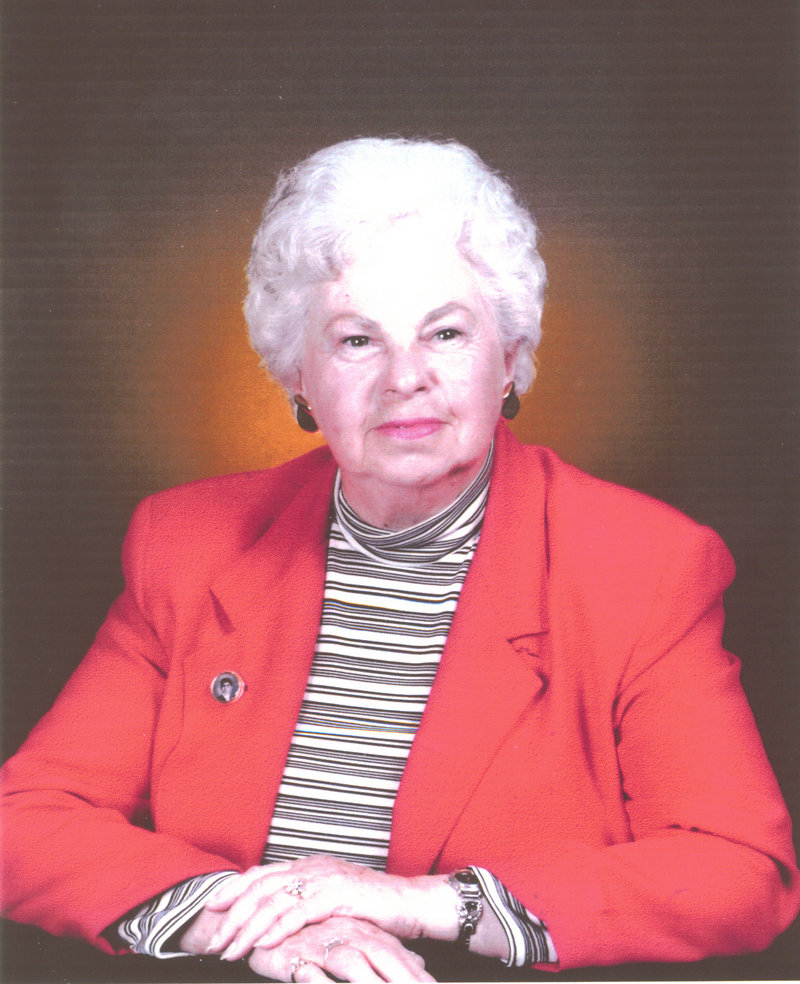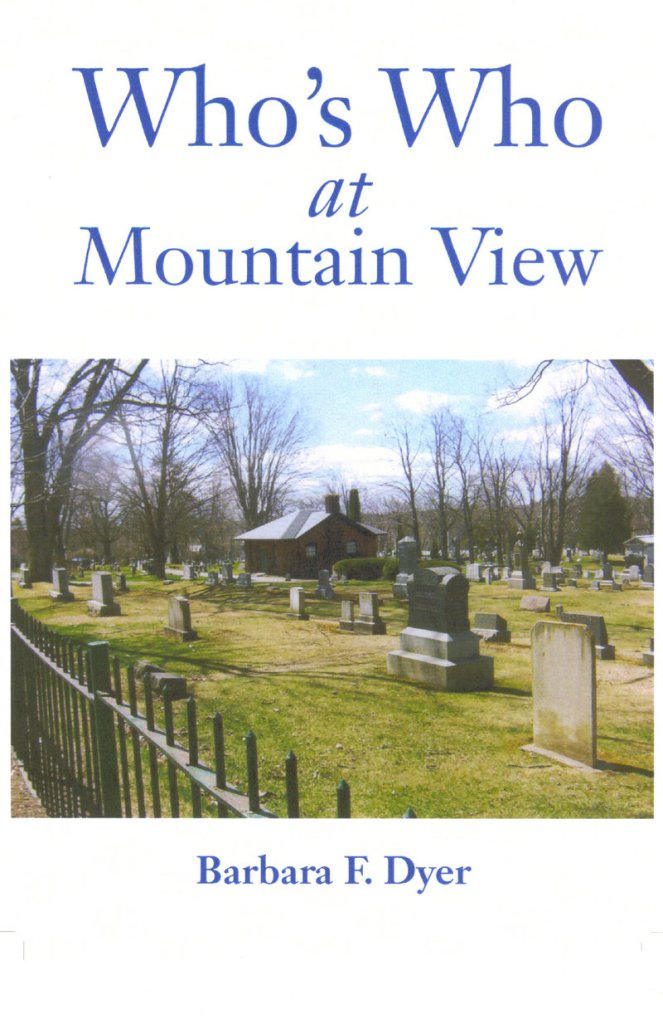Barbara F. Dyer, a Camden historian, has gotten to be good friends with Lydia Huse, John Hathaway and Fred Crockett.
Here’s the thing. They’re all — everyone but Dyer — dead.
Like a lot of people, Dyer has wandered the pastoral Mountain View Cemetery on Route 52, about a half-mile north of the Camden Public Library, and wondered about the lives of the residents who were buried there.
Dyer, who has written a local history column for the Camden Herald Gazette for 20 years, started writing about the lives of the residents of Mountain View a couple of years ago.
“They’re the people who made our town, so I found all kinds of murders and shipwrecks and all of that good stuff,” Dyer said. “Dug it up from the grave.”
Fans who missed an occasional column began asking her to compile the pieces into a book, so that is what she’s done.
“Who’s Who at Mountain View” (Camden Printing, $25) tells the story of everyone from the first settlers in the area to the beloved Dr. Paul Lerner, who owned the Owl and Turtle Bookshop.
One grave she stumbled upon marked the death of a man named John Hathaway, who died at sea in 1822 at age 23. His mother, Deborah, erected a gravestone in Mountain View to mark his passing. It was engraved with the latitude of the place he died, but a small error sent Dyer off in the wrong direction for a while.
That didn’t stop her from tracking down the entire story.
“I like saving Camden’s history,” she said. “It’s almost an obsession. If this is a way I can bring them back to life for a little while, well, that’s fun. And then some day, I’ll join them.”
Q: Were there people you were already curious about, or did you go to the cemetery and look for people who seemed like they might make interesting stories?
A: I’ve lived in Camden my whole life, 86 years. So I either knew the people or heard of the people. I hunted for the earliest burial I could find, and it was a doctor’s wife.
Then, as I went through the cemetery, there was a mother who put her son’s death on there and put a latitude on it. He was aboard a boat, and I suppose she wanted something to say where he was of course, she didn’t have a body.
So I searched far and wide for that (story), but I did get it. It was in 1822. calling enough places, I did get the microfilm (of an old news story) from Bangor. They sent it to our library, where I read the account of what happened at sea. And it was a Camden-built boat with a Camden captain and two Camden men. They ran into a storm and water spouts — I didn’t know what water spouts were before, but I guess it’s tough to be out on the water when those are going — and (John Hathaway) went overboard.
Q: And didn’t you discover that his mother put the wrong latitude on his gravestone?
A: Well, I don’t know if she did or the gravestone maker did. They put a three instead of an eight or something like that. It was an easy mistake, but it threw off where I was looking by quite a bit. But when I had the newspaper account of it, I found the real (latitude).
Q: Wasn’t it off the coast of North Carolina that he died?
A: Yes, and he was young. His father had died the year he was born. The poor mother lived to be 90-something in a great big house all by herself. It was kind of sad. Her husband was the first lawyer in Camden. The house he built is still there, across from the post office. It’s a big square mansion, I call it.
Q: And Deborah Hathaway never remarried?
A: No. Later, a part of the family, I think it was a nephew, did come there. There was a letter or something about (how) she paid him so much money and he was supposed to see that she always had food and medicine if she needed it, and care. He lived in the house, and then his daughters lived in the house. And I do remember them. They were two funny little old ladies, and they ran out of money.
(Poet and playwright) Edna St. Vincent Millay’s mother kept house for them, and so (Millay) was in there quite often. They had a wonderful library with all the great works, and they had a nice piano that she played. They helped her that way, so by the time she became rich and famous, they had run out of money and still had the big house so she would send them money each month. She became fond of them. They were good to her as a child, as a teenager, so she would send them things.
Q: Do you know how many people are buried in the cemetery?
A: No, there is no good record of that.
Q: How did you do the research? Was it mostly in libraries and historical societies, or did you contact families as well?
A: All of the above. I used the Camden Herald. I used the archives to make sure they were buried there. And then I’d go find the stone. Some of the families I knew. I’m still writing columns, so I called a couple of people yesterday, because I didn’t have a picture of two guys who lived off the land all their life and spent something like $18 for the year for everything. This was back in the ’40s. I knew the great-niece and put in a call to her to see if she had a picture of them.
Q: Were they brothers?
A: They were brothers.
Q: What was their name?
A: Howe. Walter and Oscar Howe.
Q: And what have you found out about them so far?
A: One of them died, I think, in the ’50s, and one of them lived another 20 years or so. The second one ended up in a nursing home. He loved candy, and he wouldn’t buy himself any candy. There was a woman from Lincolnville who visited the people from up-country, although his house is on the Camden line. She’d come visit and bring a piece of candy. He knew at 3 o’clock every day he’d get a piece of candy. And he died and left a beautiful spot with blueberry barrens and a beautiful view, and I think every nickel they made. And he left it to a niece. He didn’t marry, didn’t have any children.
Q: So did they live on a farm? It sounds like they were the original back-to-the-landers.
A: They lived on a farm. They never had curtains up the window or any of the luxuries, you know. I thought they never had electricity and plumbing, but I found out that when Oscar died, Walter put in electricity and he actually had lights. So I don’t know whether Oscar didn’t want to spend the money or if Walter decided he had plenty now and he was going to spend a little. … They were very interesting characters.
Q: I want to ask you about Fred Crockett, the man whose ancestor supposedly invented doughnut holes. Did you ever find out if that story was true?
A: Well, I guess it was. I knew Fred. His father owned the 5-and-10-cent store. Fred debated at a restaurant (convention) in New York. … They had all kinds of stories. Well, Fred won the debate, so his ancestor was recognized as inventing the hole in the doughnut. Fred was very proud of that, and he gave talks everywhere on it.
He was a great talker. He could give a speech without a note. And he was a nice-looking man. He always dressed up to the hilt, he was tall, and it would just roll right out of him. He even had a commodore’s hat, like on a boat, and if someone were worthy he’d make them “Commodore of the Doughnut Fleet.” So he had people like Mae West, who came here for summer theater once.
Q: Do you have a favorite story, one that you think is the most interesting?
A: Well, I guess I like the shipwreck because it took so much research to find it. You know, 1822 wasn’t easy, and it was quite by accident and providence, I guess.
And the first burial was the doctor’s wife who died at 23, I think, and he used to go up and play the flute on her grave. He did marry again, and I wondered if he told his second wife he was going on a house call. But he played her flute music, so a friend of mine and I went up with a picnic lunch, and took a little CD player and batteries and a flute CD, and played to Lydia. (Laughs.) Well, she hadn’t heard it for probably 200 years.
Q: Do you do that kind of thing often? Walk through the cemetery?
A: I used to walk through it a lot. It’s really a beautiful cemetery and an old cemetery, with Revolutionary War people and Civil War, and my mother is buried there.
Q: Do you feel like you know some of these people now that you have researched them so well?
A: Well, I did know a lot of them, and like I said, I have one-way conversations with them. There’s a gentleman up there, I haven’t written about him, but he was a photographer in Camden and I was 10 years old. The landlady had an apartment in the back of the house that we lived in, and every night I’d go down and play cards with her. She belonged to a group of people that played whist. They’d go to each other’s houses, and when they needed a fourth, sometimes she’d take me. I was 10 years old, and they were — I don’t know, I thought they were really old. They might have been 70. They seemed old. And he was wonderful. And when I walk by his stone, I ask him, does he remember when I played whist with him? In fact, he died at one of the whist parties. He died at the table.
Q: Oh my goodness.
A: Yep. I wasn’t there, thank goodness.
Staff Writer Meredith Goad can be contacted at 791-6332 or at:
mgoad@pressherald.com
Copy the Story Link
Send questions/comments to the editors.





Success. Please wait for the page to reload. If the page does not reload within 5 seconds, please refresh the page.
Enter your email and password to access comments.
Hi, to comment on stories you must . This profile is in addition to your subscription and website login.
Already have a commenting profile? .
Invalid username/password.
Please check your email to confirm and complete your registration.
Only subscribers are eligible to post comments. Please subscribe or login first for digital access. Here’s why.
Use the form below to reset your password. When you've submitted your account email, we will send an email with a reset code.